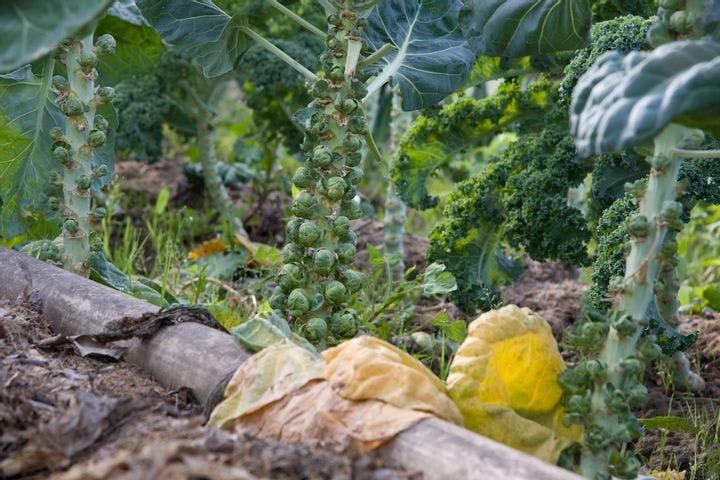Summer 2009
Green Thumb and Then Some
– Steven Lagerfeld
Luther Burbank, an appreciation.
It’s almost impossible now to imagine an America in which a plant breeder could become a national celebrity and idol of millions. But that’s precisely the story of Luther Burbank (1849–1926), “the Wizard of Santa Rosa,” as he was styled in countless magazine articles. Helen Keller, the king of Belgium, and football star Red Grange made pilgrimages to his home in California’s Sonoma Valley. A photo from 1915 shows Burbank sitting on the steps of his house in genial conversation with the two men who were most nearly his peers, Thomas Edison and Henry Ford.
In The Garden of Invention, Jane S. Smith, a former academic and the author of a book on the history of the polio vaccine, blows the dust of a million ancient textbooks off Burbank’s remarkable story. “No matter what kind of hero you wanted,” Smith writes, “it seemed Luther Burbank was a leading candidate”—scientist, sage, guardian of nature, steward of New England virtues, herald of the California dream.
"No matter what kind of hero you wanted," writes biographer Jane S. Smith, "it seemed Luther Burbank was a leading candidate."
The association with Edison and Ford is telling. Born into comfortable circumstances in Lancaster, Massachusetts (near the birthplace of Johnny Appleseed), Burbank was inspired by Charles Darwin’s The Variation of Animals and Plants Under Domestication (1869) to see that he could use his love of nature to join the ranks of the era’s heroic inventor/entrepreneurs. Reading Darwin’s meticulous documentation of how plants evolved in response to environmental changes, Burbank realized that a shrewd and energetic Yankee could speed up the process by “perturbing” nature and bending it to human needs.
Even before he lit out for California in 1875, Burbank created the blight-resistant Russet Burbank potato, still one of the world’s most widely grown varieties. Settling in Santa Rosa and later establishing his experimental farm in nearby Sebastopol, Burbank arrived just as California was being transformed from a raw frontier of cattle ranches and wheat farms into a new Eden, yielding fruits, vegetables, and nuts, and he would play a leading role in this transformation, creating more than 800 varieties, including everything from the Satsuma plum to the Shasta daisy, as well as more exotic offerings such as white blackberries and a tomato-potato cross. Most breeders pursued slow improvements of existing varieties; Burbank aggressively used techniques such as crossbreeding and grafting to create entirely new varieties.
Burbank himself was an exotic hybrid. Fanatically hard-working and a shameless self-promoter, he nevertheless exuded an easygoing charm and an almost contagious serenity. In the California sun, the nature-loving boy weaned on the transcendentalism of Ralph Waldo Emerson and Henry David Thoreau ripened into something of a West Coast guru. In 1907, divorced and childless after a disastrous six-year marriage (his adoring mother and sister kept house for him until he remarried at 67), he published a popular child-rearing guide in which he opposed formal schooling before age 10 and expounded on the value of exposing the young to nature. He called it The Training of the Human Plant.
Burbank’s pioneering hybridization of the New England and California sensibilities is one of several subjects Smith could have analyzed more deeply in her fine (and admirably concise) biography. Another is the change in the status of science that Burbank’s story illustrates.
The late 19th century brought the rise of agricultural science, and its leading lights were eager to bring the legendary plant breeder into the fold. In 1904, the Carnegie Institution awarded Burbank an open-ended grant of a then-astounding $10,000 per year; that same year, Stanford University named him to its faculty. Yet by 1910, both the grant and the appointment were withdrawn. Burbank had begun his work before Mendelian genetics that revealed the mechanism of inheritance became widely accepted, and he rejected some of its sterner dictates (in some cases correctly, Smith notes). There were other problems, such as Burbank’s haphazard records of his experiments, but it was his mysticism that probably made a break inevitable. Not only did he talk to his plants, he believed that all organisms are connected to one another by larger forces that he variously described as electrical or magnetic, or simply as “vibrations.” There was no room for such talk in the new science.
Burbank never grew very rich from his creations. Plants did not enjoy protection under U.S. patent law until 1930, so he was forced to sell each new variety to commercial growers with no hope of royalties. Today’s bioengineered crops—including the Bt Russet Burbank potato—do enjoy such protection. What they and their very un-Burbank-like creators do not enjoy is the rapturous admiration of a public that believes in the unalloyed goodness of science.
* * *
Steven Lagerfeld is editor of The Wilson Quarterly.
Reviewed: The Garden of Invention: Luther Burbank and the Business of Breeding Plants by Jane S. Smith, Penguin, 354 pp, 2010.
Photo courtesy of Flickr/Andrea Dunlap
Up next in this issue
